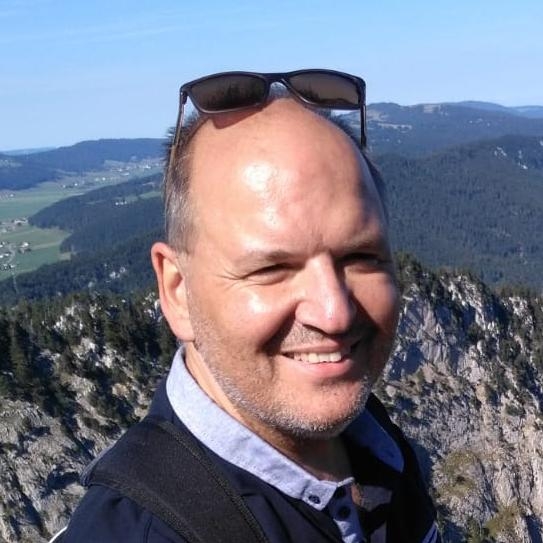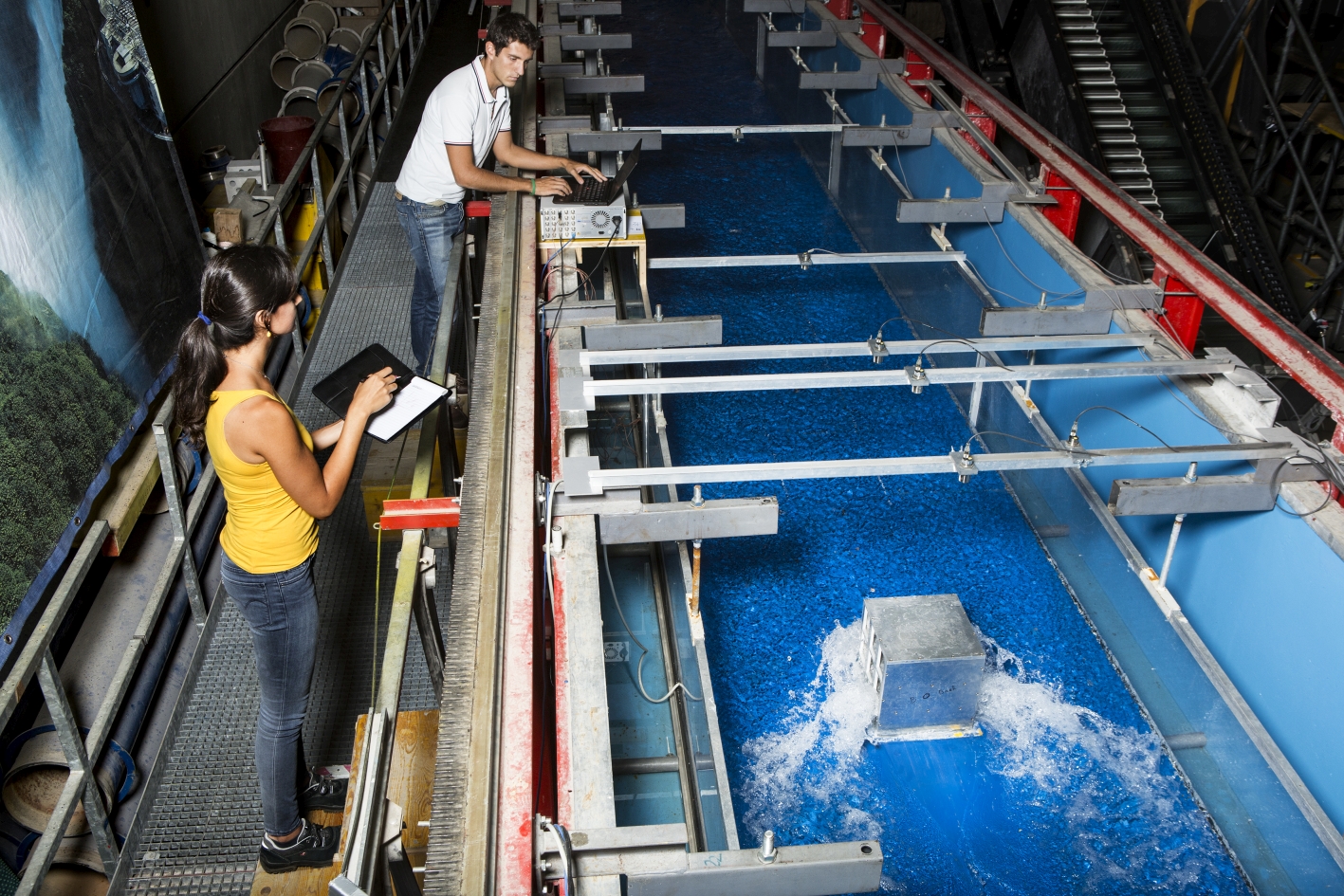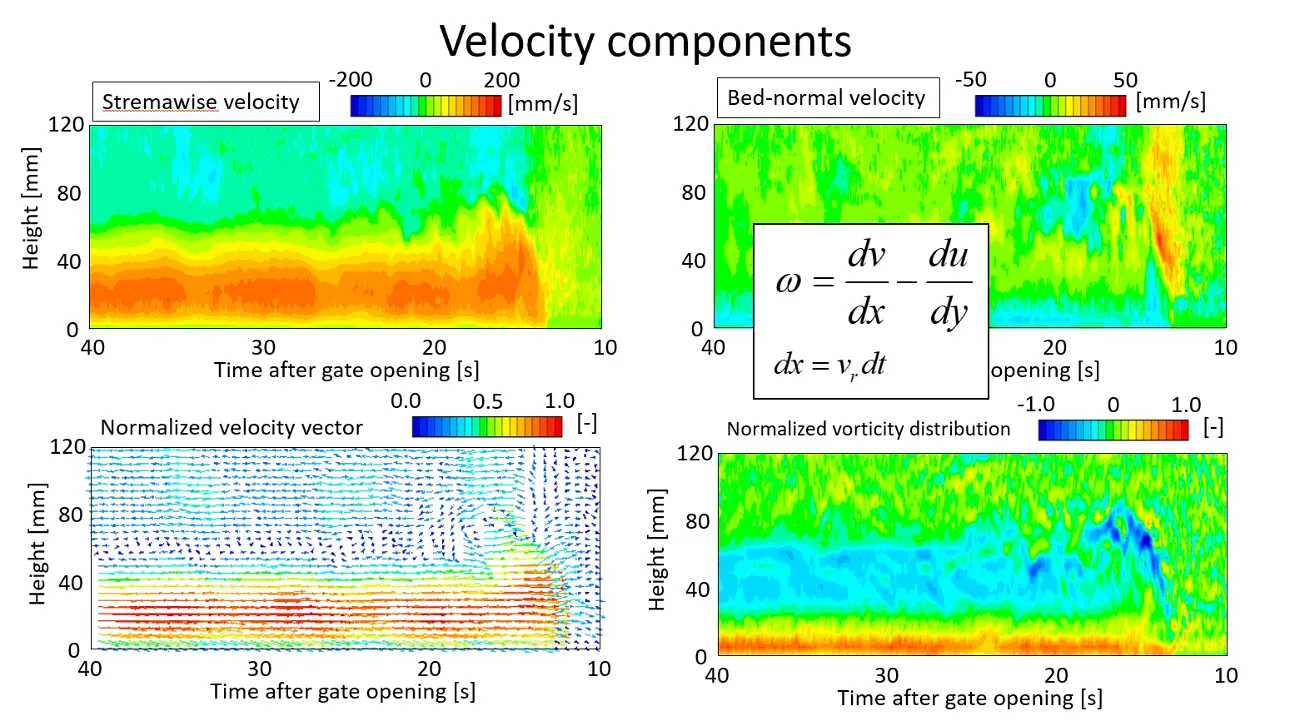Giovanni De Cesare, pioneer user of Ultrasonic Velocity Profiling in hydraulics
My name is Giovanni De Cesare, I am the operational director of the Platform of Hydraulic Constructions PL-LCH (formerly Laboratory of Hydraulic Constructions LCH) of the École Polytechnique Fédérale de Lausanne (EPFL), Switzerland.
I am in charge of technology transfer of the laboratory, as well as research and teaching. I have more than 25 years of experience in physical and numerical modelling in all domains of hydraulic structures and schemes, with more than 100 studies performed, as well as several commissioned studies and expert reports in applied hydraulics and hydraulic works. I have specialized in various fields such as reservoir sediment management and turbidity currents; special hydraulic works; rapid transients in pressure systems and ultrasonic Doppler flow measurement.
My academic background includes a master degree MSc in Civil Engineering, and PhD degree in technical sciences both achieved at EPFL. For my PhD thesis I studied reservoir sedimentation by turbidity currents with on-site measurements, numerical simulation as well as experimental tests. Moreover I studied abroad for one year at the Georgia Institute of Technology in Atlanta, USA. I am the author of more than 150 scientific papers in peer-reviewed journals, publications and conference proceedings.

Challenge/Problem
Hydraulic research concentrates on the interactions of hydraulic works with their environment, in particular with water, sediment, pollutants, air and foundation. Current research focuses on the following themes:
- Natural hazard, climate change, extreme flood events, debris flow, sediment transport and erosion in catchment areas and rivers
- Reservoir sedimentation and sustainable management
- Flow in particular hydraulic structures such as vortex flow
- Fluvial hydraulics, ecomorphology and fluvial habitats, river bank stabilization, bioengineering in river training works
- Lakeshore valorization, erosion and protection measures, oil spill or other pollutant retention systems

Solution, approach & results
Research studies require the best and most accurate instrumentation available. Ultrasonic Velocity Profiler (UVP) is such an efficient and valuable monitoring tool that convinces researchers in all major scientific fields in hydraulic engineering.
In all these cases, detailed spatio-temporal inside view of water flow in and around the structures is essential. In several cases, the fluid is impenetrable to light and visual or laser techniques are not applicable. The Met-Flow Ultrasonic instruments have the following great advantages:
It obtains spatio-temporal flow information
It is applicable to opaque liquids
It is non-intrusive or can be sufficiently away from the control volume
2D flow mapping is practicable with multiple transducers as well as 3 velocity components point measurement
As seen, UVP covers a very large range of applications and configurations in hydraulic engineering. After the pioneering exploratory trial years in the last century, this measurement method is nowadays well established in hydraulic engineering as a user-friendly, cost and time effective research and monitoring tool, with its quasi-instantaneous availability of flow information, a non-negligible advantage in hydraulic laboratory research.
Almost every day, new applications and prospects of this measurement technique appear, e.g. in the field of bioinspired swimming robots, sailing and ship performance, plastic waste in rivers, lakes and the ocean, mining waste and slurries, as well as special flow features.


Typical UVP instrument set-up
- Profiler: single-probe (1 velocity component along one profile – 1C-1D), multi-probe aligned (1C-2D) or for 2D monitoring (2C-2D), trigger input together with robotic positioning system (alternating move and measure – up to 3C-3D), dual UVP-DUO for instantaneous 2 velocity components along one profile (2C-1D)
- Transducers: standard TX 0,5 – 1 – 2 – 4 MHz, long-range LR 0,5 – 1 MHz
- Software: UVP software, MatLAB import utility
- Accessories: acoustic reflectors, hydrogen bubble seeding, acoustic gel, cable extensions
Related scientific publications
Nomura S., Hitomi J., De Cesare G., Takeda Y., Yamamoto Y., and Sakaguchi H. (2018). Sediment mass movement of a particle-laden turbidity current based on ultrasound velocity profiling and the distribution of sediment concentration, Geological Society of London, Special Publication, 477, doi:10.1144/SP477.19
Mulligan S., De Cesare G., Casserly J., and Sherlock R. (2018). Understanding turbulent free-surface vortex flows using a Taylor-Couette flow analogy, Nature Scientific Reports, 824 (2018), doi:10.1038/s41598-017-16950-w
Birkhofer B., Meile T., De Cesare G., Jeelani S. A. K. and Windhab E.J. (2016). Use of gas bubbles for ultrasound Doppler flow velocity profile measurement, Flow Measurement and Instrumentation, Elsevier, 52 (2016), pp. 233–239, doi:10.1016/j.flowmeasinst.2016.10.015
Jenzer Althaus J.M.I., De Cesare G. and Schleiss A. J. (2016). Release of suspension particles from a prismatic tank by multiple jet arrangements, Chemical Engineering Science, 144(2016), pp. 153-164, doi:10.1016/j.ces.2016.01.042
Amini A., De Cesare G. and Schleiss A. J. (2009). Velocity profiles and interface instability in a two-phase fluid: investigations using ultrasonic velocity profiler, Experiments in Fluids, Springer, Volume 46, Issue 4, pp. 683-692, doi:10.1007/s00348-008-0594-1
Meile T., De Cesare G., Blanckaert K. and Schleiss A. J. (2007). Improvement of Acoustic Doppler Velocimetry in steady and unsteady turbulent open-channel flows by means of seeding with hydrogen bubbles, Flow Measurement and Instrumentation, Elsevier, 19 (2008), pp. 215–221, doi:10.1016/j.flowmeasinst.2007.08.009
De Cesare G. (2002) Report: Third International Symposium on Ultrasonic Doppler Methods for Fluid Mechanics and Fluid Engineering (3rd ISUD), Journal of Applied Rheology, Vol. 12/6, November/December 2002, pp. 309-311, doi:10.3933/ApplRheol-12-309
De Cesare G. and Boillat J.-L. (2006). Flow velocity measurements using ultrasound Doppler method – 10 years experience in hydraulic modeling, Proc. of the Fifth International Symposium on Ultrasonic Doppler Methods for Fluid Mechanics and Fluid Engineering, 5th ISUD, 12-14 September 2006, ETH Zurich, Switzerland, ISBN: 3-905609-29-0, pp. 113-116